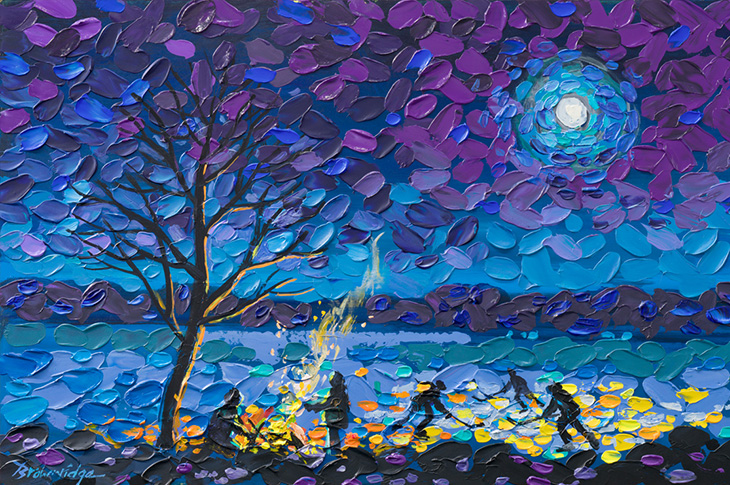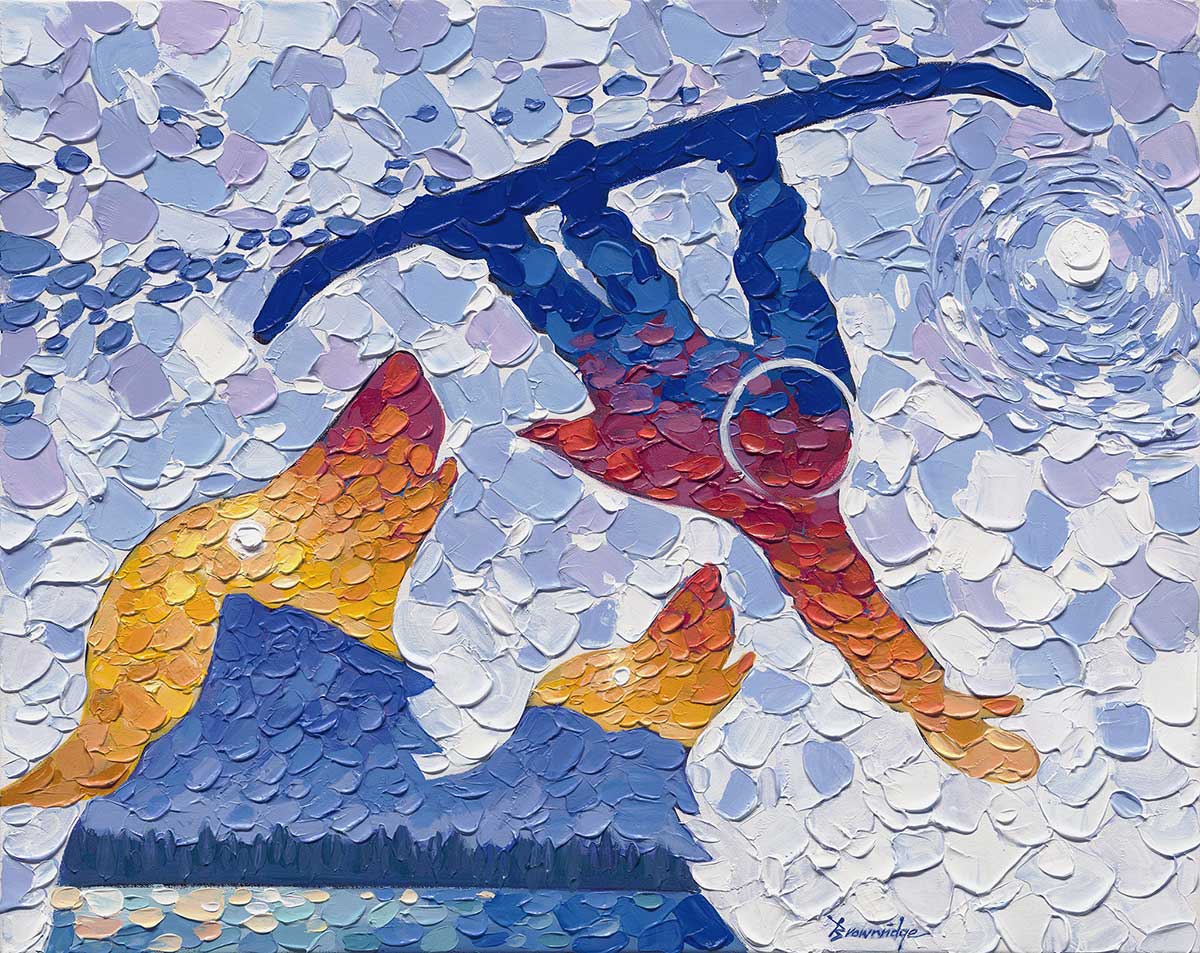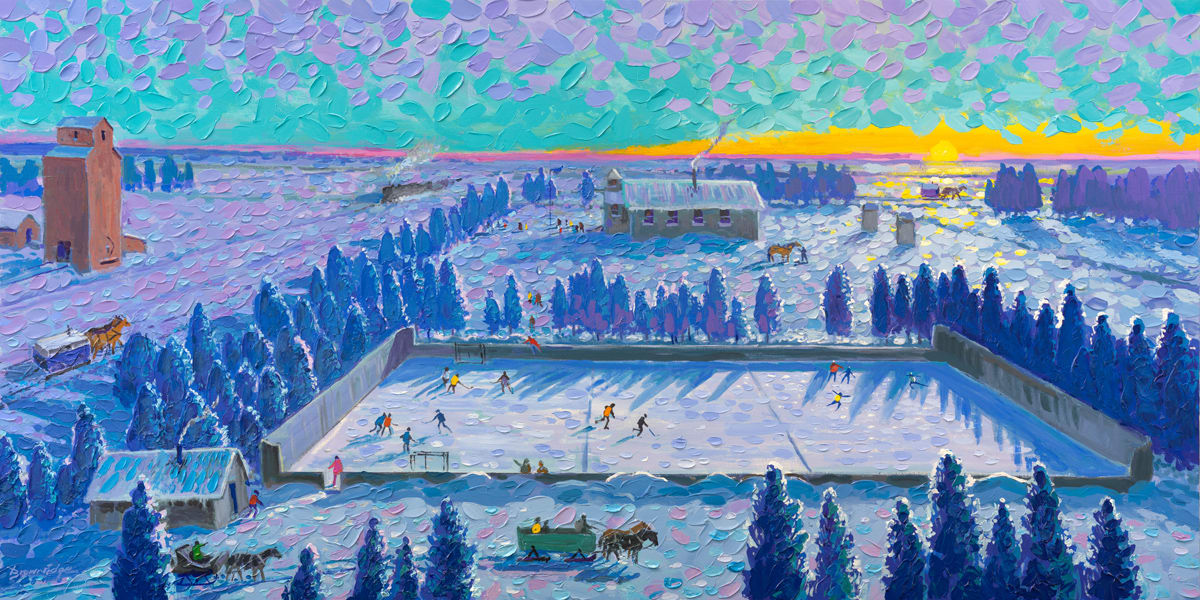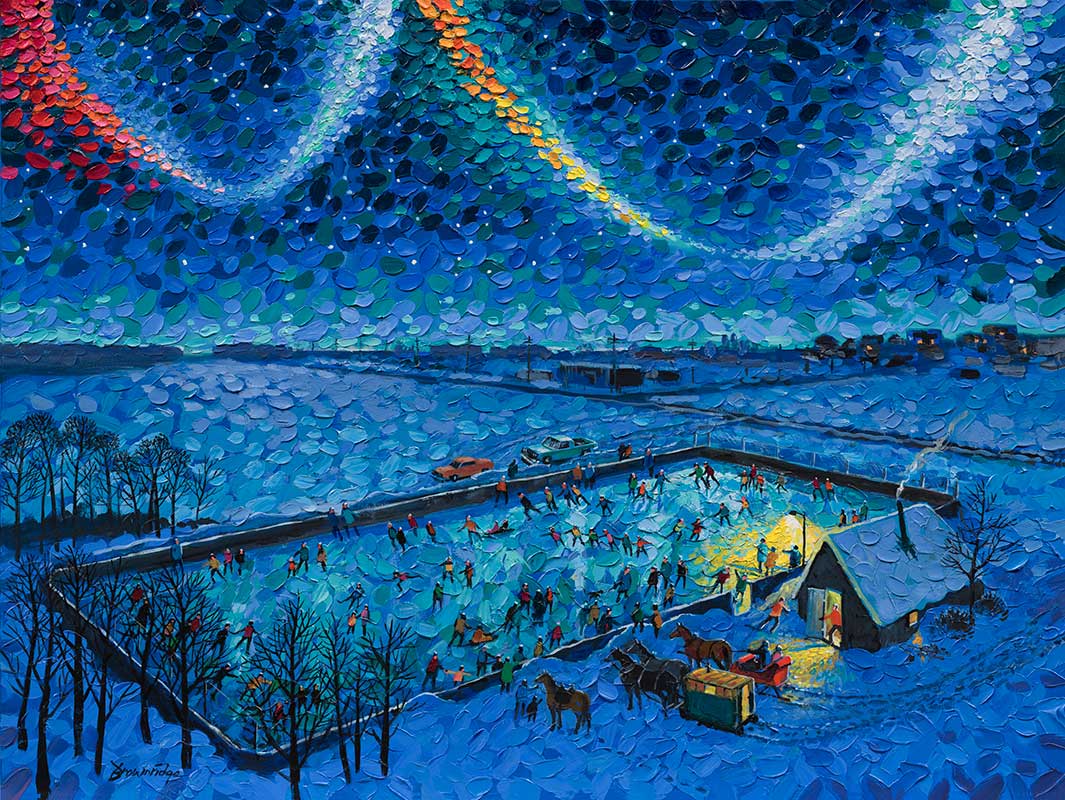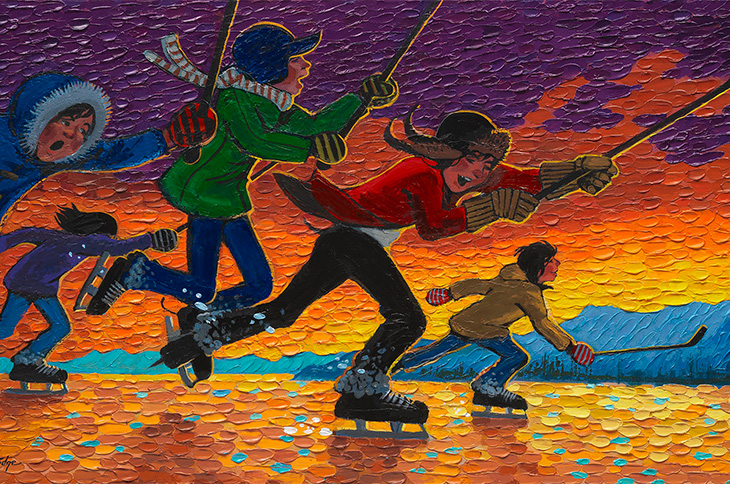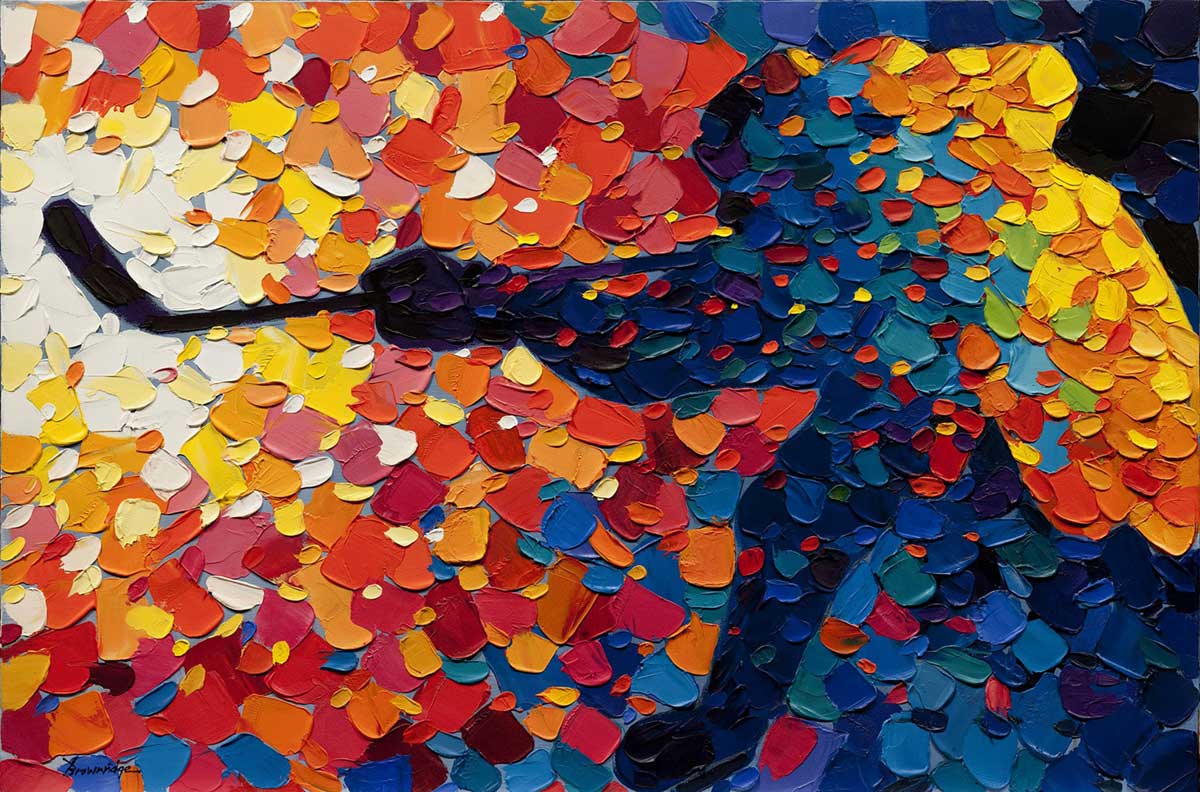“It was a key moment... It was like a door opening to a whole world, an overwhelming avalanche of exciting ideas and people.”
Arriving in Calgary from Vawn, SK in 1953, Bill Brownridge felt intimidated by the idea of entering art college. He worried about the pressure. After all, these city folks were worldly. He worried too about acceptance.
It wasn’t so much because he came from a prairie hamlet but, more to the point, it was because he only had one leg. In the end, his anxiety proved needless.
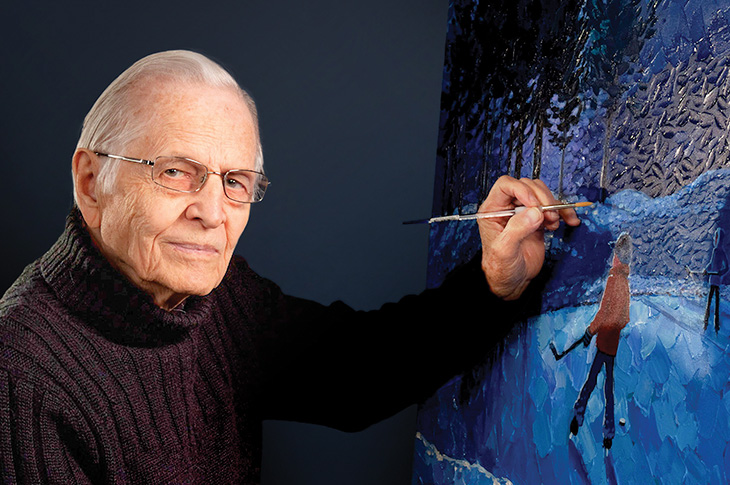
“There was a breakthrough at SAIT then — the world there was more open to people being different,” Brownridge recalls.
“I had an interview with [Art Department Head] Illingworth ‘Buck’ Kerr, a famous artist, and I was nervous — then surprised to see he looked like a prairie farmer. He smoked roll-your-owns,” Brownridge laughs.
“It was a key moment... It was like a door opening to a whole world, an overwhelming avalanche of exciting ideas and people.”
Brownridge had already overcome so much. Growing up, he spent hundreds of hours on Vawn’s outdoor rink, shovelling and playing shinny. But he never wore skates. Born with spina bifida and a congenital foot disorder, Brownridge played wearing leather moccasins. When plaster casts meant to fix his feet were misapplied, it caused massive infection and half of his right leg was amputated.
“If not for my saintly mother, I don’t think I could have endured,” Brownridge grimaces.
Cooped up in hospitals and at home for long periods, the youngster sought relief in drawing.
After art college instilled his first bit of confidence as a serious artist, Brownridge (who graduated from the Advertising Art program in 1958) developed his craft over the next 50 years, working with a top advertising firm, later as a gallery artist, and still later as a best-selling author.
One of his proudest achievements was Tracking the Iron Horse, an exhibition of Brownridge’s sketches and paintings of prairie railway architecture that toured Canadian art galleries — including Calgary’s Glenbow Museum — in the late 1970's. An art book of the same name was published in 2007.
But hockey was always his main muse, and Brownridge invoked his artistic talents to create a lively, colourful world on canvas, but with deeper messages such as inclusion.
Last September — just before his 90th birthday — Brownridge was inducted into the Saskatchewan Sports Hall of Fame as a Hockey Builder.
“It was a surprise,” says Brownridge, now living in Victoria, BC. “I feel moved and deeply honoured.”
Heart of Hockey
The spirit for the sport of hockey is seen in Brownridge's art, invoking the viewers' own wonderful memories and nostalgia of the sport and being out on the ice.
Visit Heart of Hockey to view more art created by Bill Brownridge.
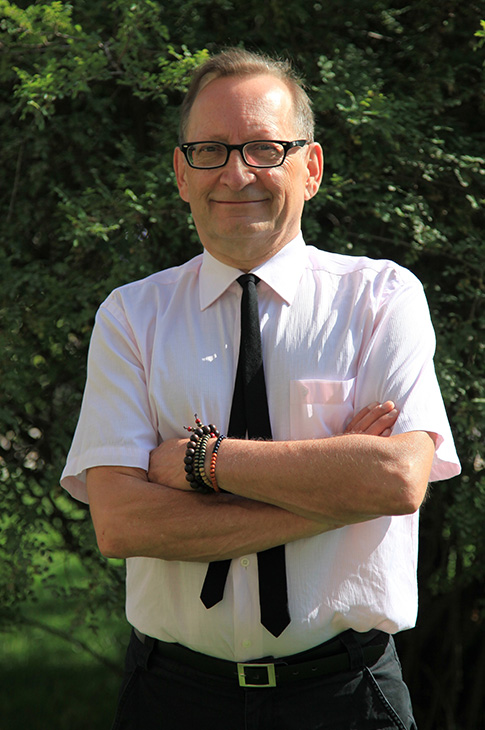
About David Brownridge
David Brownridge is a more than a biographer — he is also Bill Brownridge's son.
David graduated from SAIT's Journalism program in 1988. Following the completion of the program, Brownridge relocated to Saskatchewan where he worked as a professional journalist for 10 years, appearing in both print (the Regina LeaderPost) and broadcast media (CBC Radio and TV).
In 1995, Brownridge won the Saskatchewan Writer's Guild Award for Best Non-fiction Article, as judged by a Governor General's Literary Award Winner.
Following his career as a journalist, Brownridge returned to school, received a Bachelor degree from the University of Calgary and began a 10-year career teaching university English and writing feature articles in China.

Oki, Âba wathtech, Danit'ada, Tawnshi, Hello.
SAIT is located on the traditional territories of the Niitsitapi (Blackfoot) and the people of Treaty 7 which includes the Siksika, the Piikani, the Kainai, the Tsuut’ina and the Îyârhe Nakoda of Bearspaw, Chiniki and Goodstoney.
We are situated in an area the Blackfoot tribes traditionally called Moh’kinsstis, where the Bow River meets the Elbow River. We now call it the city of Calgary, which is also home to the Métis Nation of Alberta.
